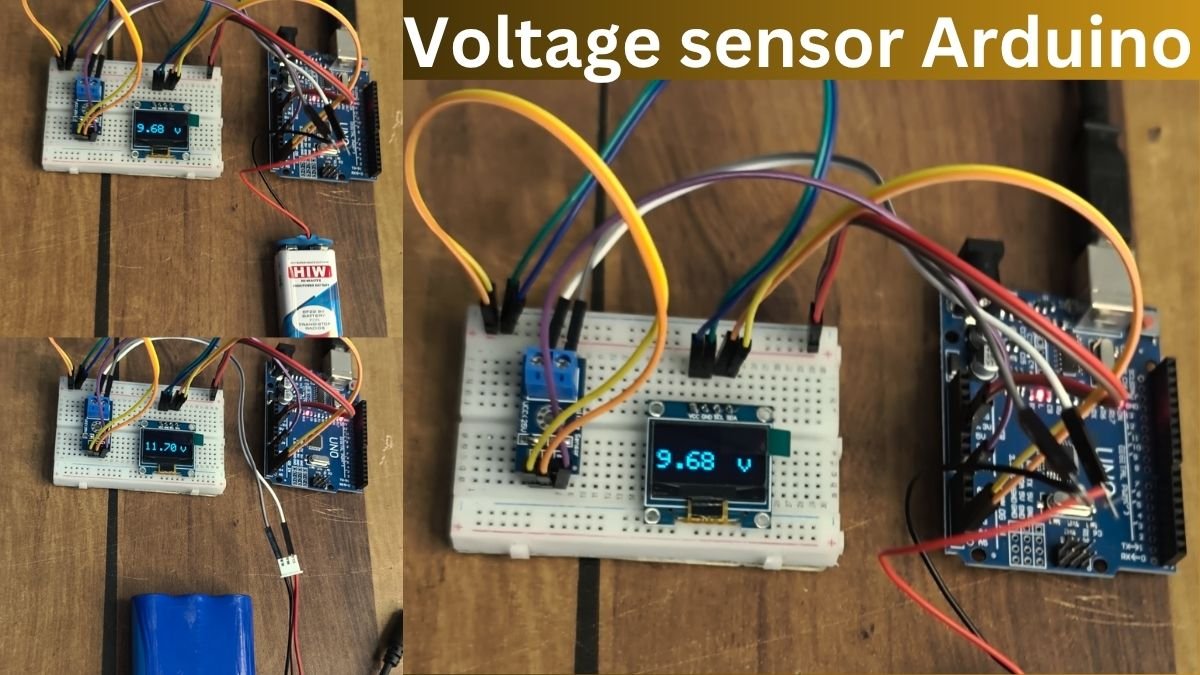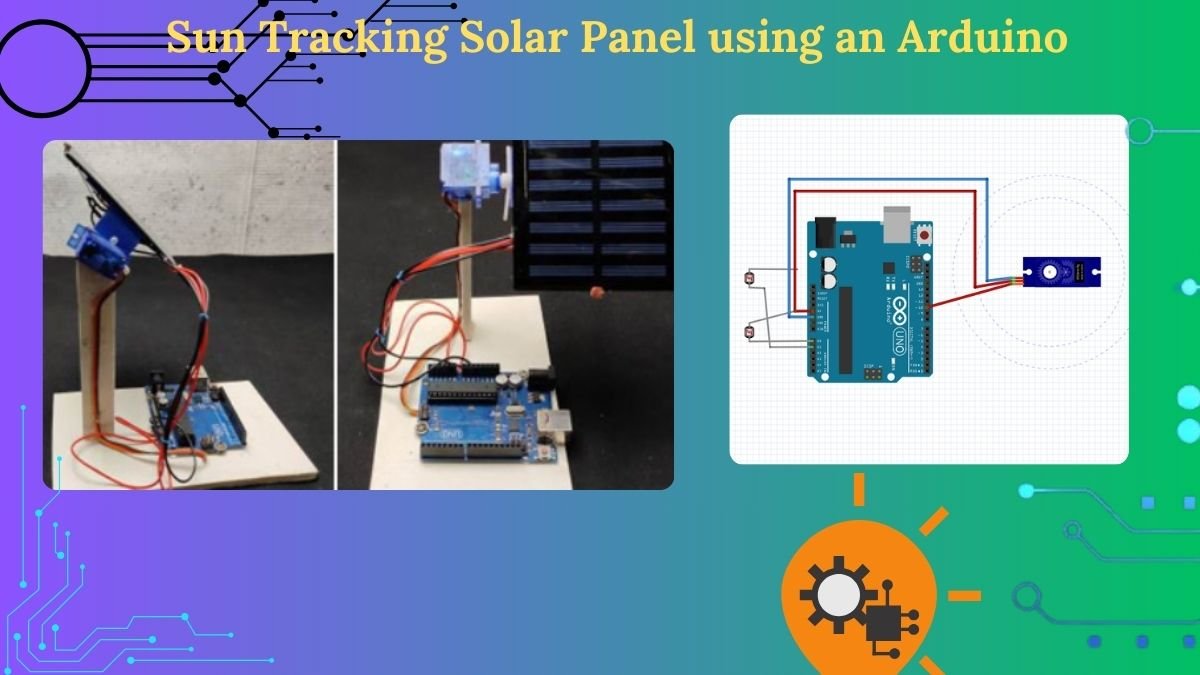Hey, Do you want to know how to Relay interface with Arduino? Do you want to control your electrical appliances just sitting in your room? Do you feel lazy to turn the lights on and off? Are you working on a project that requires the use of controlling A.C. devices? well, you are at the right place. In this article, we’ll go over how to function, use, and interface the Relay module With Arduino in a step-by-step detailed guide. Hence, I hope you find this useful. We at Techatronic have already uploaded several Arduino Tutorials and detailed project guides related to Arduino which will be useful to learn the basics and programming of Arduino.
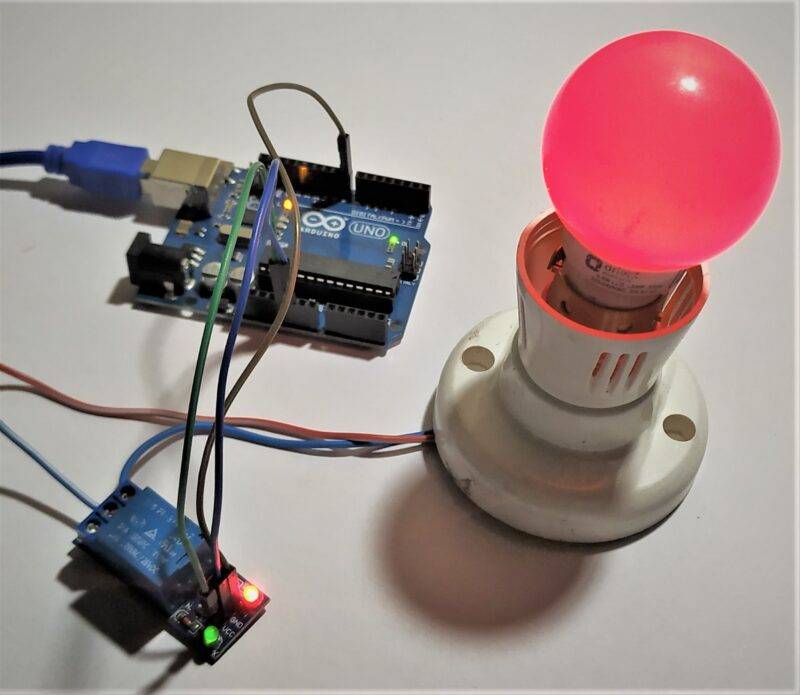
What is Relay Module?
A relay is basically a switch, which needs electrical energy to work. This can be used to control devices which can be anything from A.C. to D.C. These switches are gaining popularity in devices related to home automation. we can also make our own DIY projects related to Home Automation using IoT. you can also use this module to make a voice-controlled switch that can work with both Google Assistant and Alexa, using NODEMCU as its brain.
This can work much spontaneously which makes it a great addition to any project. the coil requires 5V to operate which is a very common voltage on which many microcontrollers work. this makes it easy to use in projects which use them. Relay modules are available in many channels as per need ranging from single-channel all the way up to sixteen-channel.

How Does the Relay Module Work?
Relay Module Works on the basis of Electromagnetism. A coil inside a relay is used for the functioning of the relay. When an electric current passes through the coil, it forms an electromagnetic field. An iron core inside the coil moves and it helps the contacts to touch, helping the circuit to close. when no current passes through the coil, the contacts are normally open.
There are two types of relay configuration available. they vary in their throw and pole. The pole is the control terminal of the coil, whereas the throw is the possible connection as output. a Single pole-Single throw relay can control only one switch at a time whereas a single pole-Double throw relay can work as two Switches.

Components Required
- Arduino UNO
- Relay Module
- AC Bulb
- AC power supply
- Jumper Wires
- Breadboard
- USB cable to connect Arduino UNO with computer
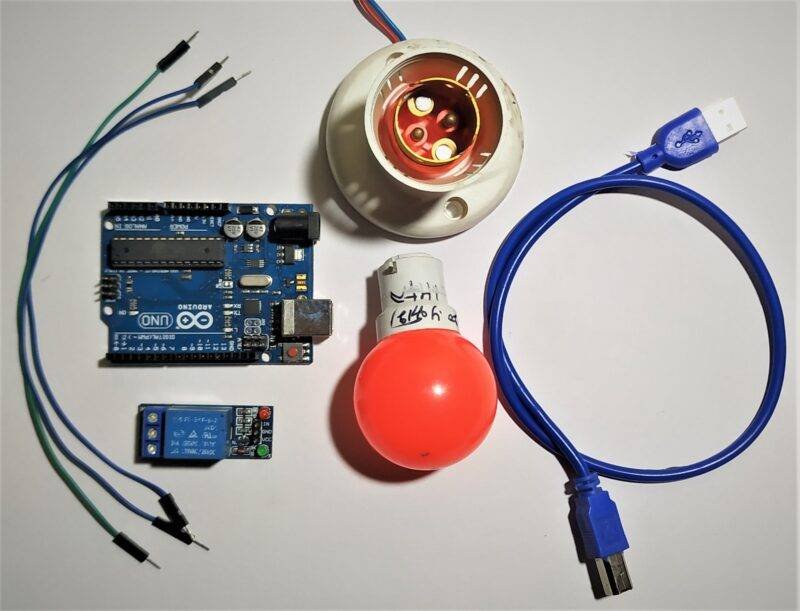
Relay Interface With Arduino Circuit Diagram
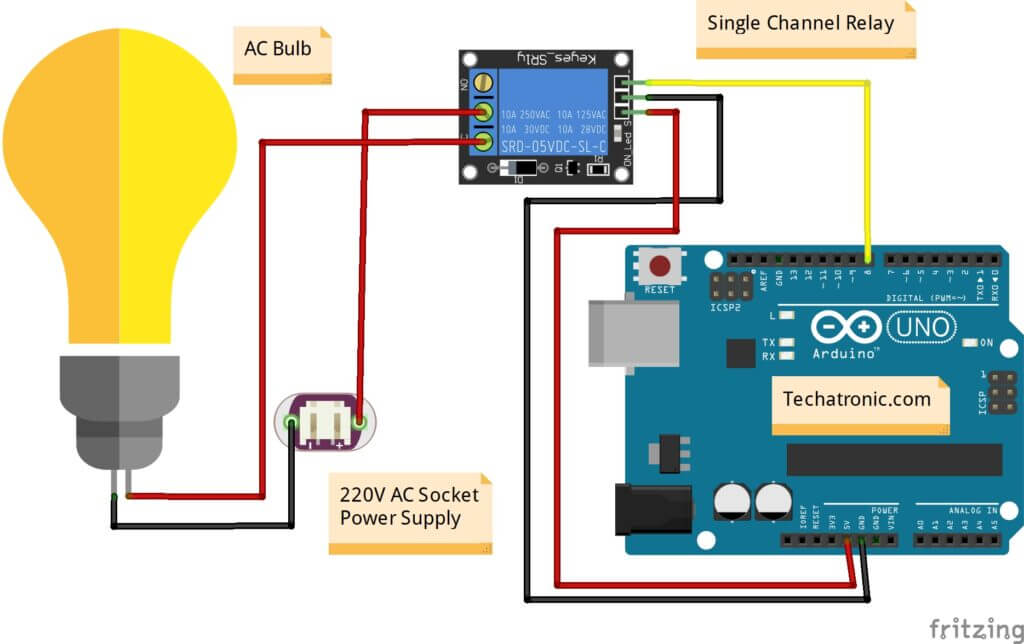
| Arduino UNO | Relay Module | |
| D4 Pin | IN1 OUT Pin | |
| ( +5V ) | VCC , ( + 5V ) | |
| GND | GND | |
| AC Bulb | 220 V AC Supply | Relay Module |
| Normally Open | ||
| Phase | Common | |
| Terminal 1 | Normally Closed | |
| Terminal 2 | Neutral |
- VCC of the module to 5V of Arduino UNO
- GND of the module to GND of Arduino UNO
- Trigger Pin of the module to D8 of Arduino UNO
Relay Interface With Arduino Code
// TECHATRONIC.COM
void setup()
{
pinMode(8,OUTPUT); // RELAY PIN
digitalWrite(8,HIGH); // Normally ON Only For Chanies Relay Module
}
void loop()
{
digitalWrite(8,LOW); // RELAY ON
delay(1000);
digitalWrite(8,HIGH); // RELAY OFF
delay(1000);
} 
Before uploading the code, check all the connections properly as you are working with live 220 Volt A.C. The bulb will turn on for 1 second and turn off for another 1 second. I hope you will find this tutorial helpful. If you have any queries, you can ask us in the comment section below.


